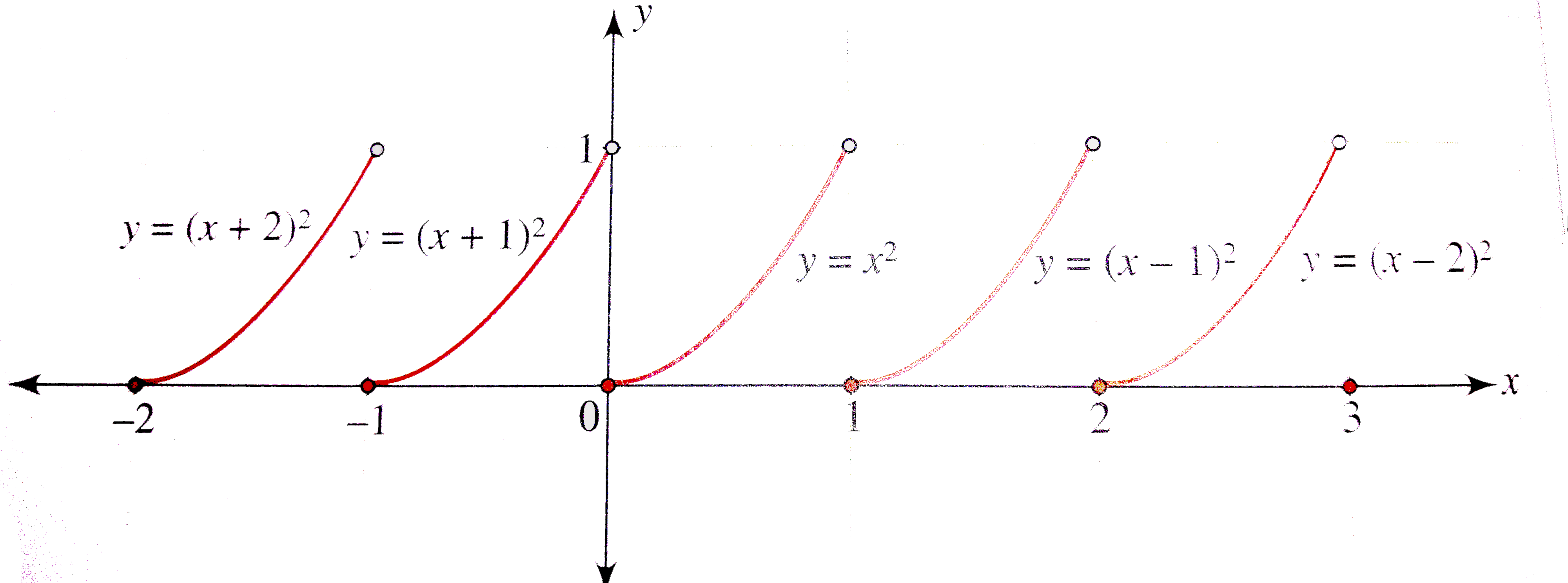does not exist for
wher represent greatest integer function represent fractional part function
We have
or
Since .
For , which is a half parabola to the right of the vertex at .
For , which is a half parabola to the right of the vertex at (1, 0).
For , which is a half parabola to the right of the vertex at (2, 0).
For , which is a half parabola to the right of the vertex at , and so on.
The graph of the function is as shown in the following figure.

Topper's Solved these Questions
- BOOK - CENGAGE ENGLISHCHAPTER - GRAPHS OF ELEMENTARY FUNCTIONS EXERCISE - EXERCISES34videos
GRAPHS OF ELEMENTARY FUNCTIONS
- BOOK - CENGAGE ENGLISHCHAPTER - GRAPHS OF POLYNOMIAL AND RATIONAL FUNCTIONSEXERCISE - Exercises17videos
GRAPHS OF POLYNOMIAL AND RATIONAL FUNCTIONS
- BOOK - CENGAGE ENGLISHCHAPTER - GRAPHS OF TRIGONOMETRIC FUNCTIONSEXERCISE - Exercises22videos
GRAPHS OF TRIGONOMETRIC FUNCTIONS
Similar Questions
Prove that limx→2[x] does not exists, where [.] represents the greatest integer function.
View SolutionFInd limx→α+[min(sinx,{x})x−1] where alpha is the root of the equation sinx+1=x Here [.] represents greatest integer function and {.} represents fractional part function
View Solution[2x]−2[x]=λ where [.] represents greatest integer function and {.} represents fractional part of a real number then
View Solutionlimx→0[100tanxsinxx2] is (where [.] represents greatest integer function).
View SolutionSolve : 4{x}=x+[x](where [⋅] denotes the greatest integer function and {⋅} denotes the fractional part function.
View Solutionlimx→cf(x) does not exist when
where [.] and {.} denotes greatest integer and fractional part of xView SolutionThe set of all values of x satisfying {x}=x[×] where [×] represents greatest integer function {×} represents fractional part of x
View SolutionLet f(x)=[sin4x] then ( where [.] represents the greatest integer function ).
View SolutionLet f(x) = [x] and [] represents the greatest integer function, then
View Solutionf(x)={cos−1{cotx),xpi/2 where [.] represents the greatest function and {.} represents the fractional part function. Find the jump of discontinuity.
View Solution

